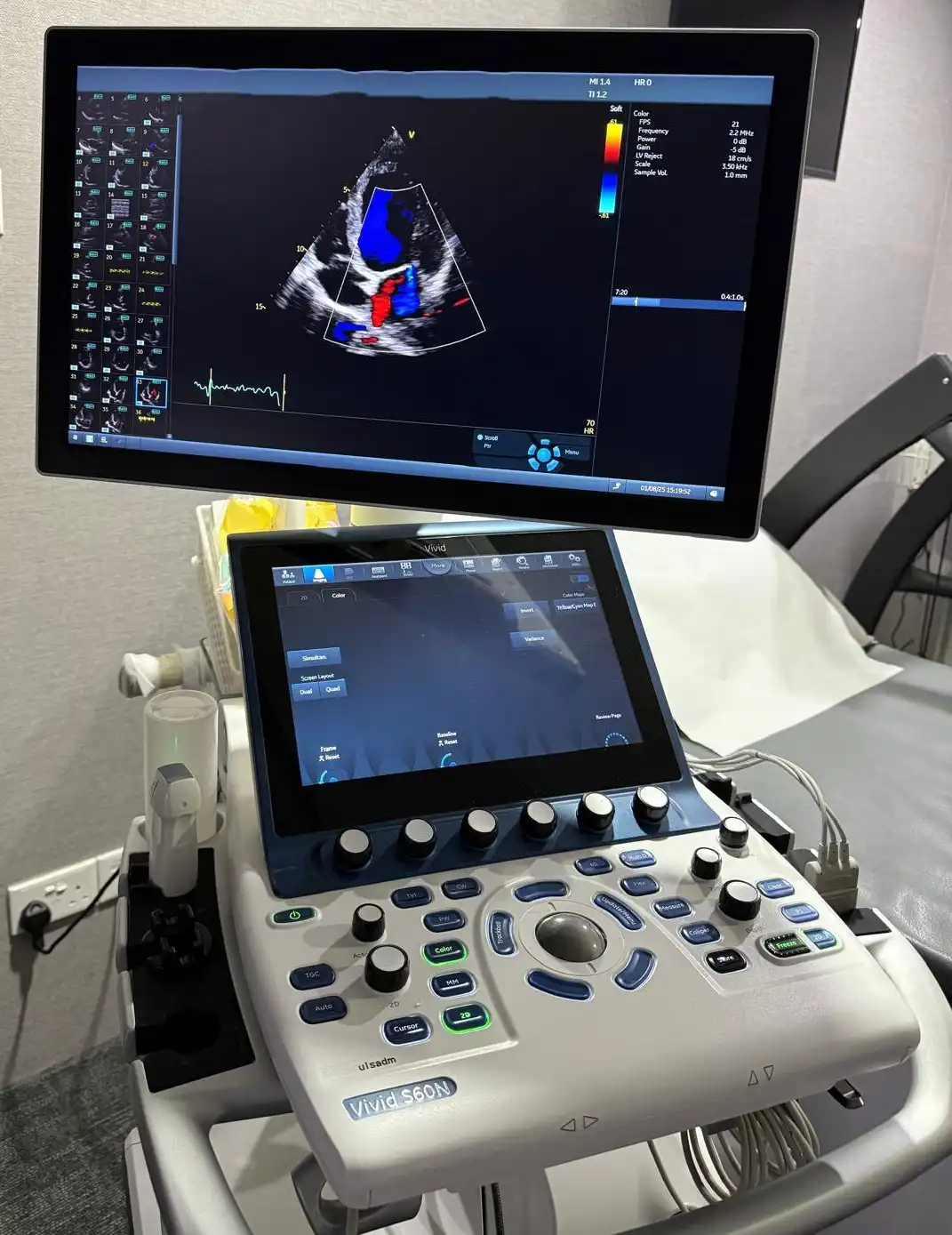2D trans-thoracic echocardiography or simply 2D echo is a non-invasive imaging technique that assesses the heart’s structure and function at rest. It uses ultrasound waves to create two-dimensional images of the heart, in order to detect any abnormalities in heart valves, blood flow patterns, chamber size and function.
How 2D Echo Works
A small device called a transducer/probe is placed on your chest. It sends sound waves into your body, which bounce back when they hit your heart. These reflected sound waves/echoes create real-time images on a screen, allowing doctors to assess your heart’s chamber size and function, valves, and blood flow.
Why Is It Used?
- Checks Heart Function
– Measures how well the heart pumps blood.
– Detects weak or damaged heart muscles. - Identifies Heart Problems
– Shows defects such as holes in the heart.
– Detects swelling or fluid around the heart.
– Determine the cause and severity of heart murmurs. - Examines Heart Valves
– Checks if heart valves opens and closes properly.
– Helps diagnose valve diseases like leakage or narrowing. - Monitors Heart Conditions
– Tracks how well treatments are working for heart diseases.
Advantages of 2D Echo
● Non-invasive : No need for needles, injection or cutting.
● Real-time Images : Shows movement of the heart beating and observe its function live.
● Safe and Radiation-Free : Uses sound waves instead of radiation e.g. X-ray.
● Feasibility: Versatile and accessible in the clinic.
● Affordable : Less costly compared to other imaging modalities like MRI or CT scans.
Limitations
● Body habitus: Body fat, lung air, shape of chest wall and presence of foreign body can hinder image clarity, as all these affect the penetration of sound waves.
Conclusion
2D echo. is a safe, easily available, and effective way to check your heart’s health. It helps doctors diagnose and monitor heart conditions non-invasively, making it a vital tool for heart care.

